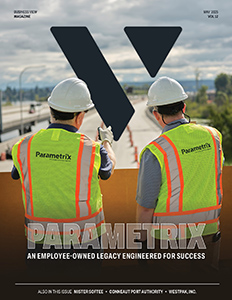NBAA News Hour: Expert Tips for Navigating NE Airspace Disruptions
Source: https://nbaa.org/, New Editor, First Published May 20, 2025
With news headlines and industry discussions alike dominated by systems outages across the busiest airspace over the Northeastern U.S., an NBAA News Hour webinar delved into the reasons for – and solutions to – these issues and offered guidance and resources to help operators navigate disruptions.
FAA Deputy Chief Operating Officer Frank McIntosh acknowledged recent communications and radar outages have further exacerbated issues following the July 2024 relocation of the N90 air traffic control (ATC) sector overlying multiple New York City-area airports to the Philadelphia terminal radar approach control (TRACON) Area C.
“The FAA was able to work with our [telecommunications] vendors to put in the appropriate mitigations to make sure if [outages] were ever to occur, that the redundancies worked like they were supposed to,” he said, adding “the second pathway came on like it was close to and there was no loss of critical services” during a brief data systems outage on May 11.
McIntosh emphasized increased staffing is needed, noting “every single [classroom] slot” is filled through summer 2026. “Our pipeline is filled … with experienced CPCs (certified professional controllers) and the intent is to shave the certification time from two and a half years to less than a year and a half,” he said.
The return of several controllers currently on leave should offer “some immediate relief” by the middle of June, McIntosh added, with plans in place for more robust telecommunications and data systems longer term.
Arrivals to the area should consider alternate airports while also being mindful of possible congestion at these locations. To speed departures, Lakisha Price, vice president, systems operations at the FAA Air Traffic Organization suggested overwater departure routes and initial low-level clearances that “tunnel” departures below busier airspace sectors.
“It’s helpful to know what you’re capable of [and] what you’re filed for,” Price added. “Those low-level routes will require you to put on more fuel before we can get you up and out and on your way.” Operators should also regularly review FAA resources including nasstatus.faa.gov and fly.faa.gov for the latest updates.
Teterboro Users Group President Dave Belastock also urged operators to be “fueled and flexible” to help minimize delays, and to work with local ATC on mitigations rather than filing alternate flight plans.
“After receiving your clearance and becoming aware of a delay, you can then begin to negotiate – for lack of a better term – [and] communicate that you are fueled to accept an alternate departure gate,” he said. “[That] gives clearance delivery and the air traffic control system additional flexibility that may allow you to minimize your delay.”
Panel moderator Heidi Williams, NBAA senior director for air traffic services and infrastructure, noted operators “may experience some short-term pain for the long-term health of the system.
“That does not mean safety is compromised,” she emphasized. “Our system is safe; we stand by that wholeheartedly. [And] we recognize that long-term health of the system is what we’re all working toward. I think we can all get there together.”

